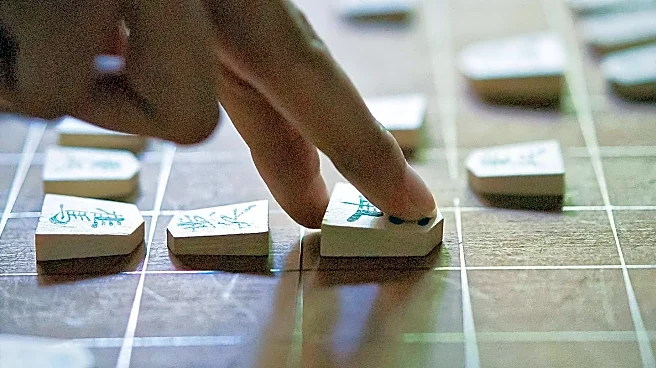What's Happening?
The New York Times has released hints for its Strands Sidekick puzzle scheduled for October 11, 2025. The Strands puzzle, a popular feature among word enthusiasts, is designed to challenge players with varying levels of difficulty. The hints are intended to assist players in solving the puzzle, which is released at midnight in each player's time zone. The article provides a platform for puzzle solvers to share their experiences and strategies in the comments section, fostering a community of word lovers. The difficulty level for the puzzle on this date is rated as moderate, according to feedback from paid testers who evaluate the puzzles.
Why It's Important?
The release of hints for the Strands puzzle is significant for the community of puzzle enthusiasts who regularly engage with The New York Times' games. These puzzles not only provide entertainment but also serve as a mental exercise, enhancing cognitive skills such as problem-solving and vocabulary expansion. The community aspect, where players can share insights and strategies, adds a social dimension to the puzzle-solving experience, encouraging collaboration and communication among participants. The moderate difficulty level ensures that the puzzle is accessible to a wide range of players, from novices to seasoned solvers.
What's Next?
As the Strands puzzle continues to gain popularity, The New York Times may explore additional features or variations to keep the engagement high among its audience. Future puzzles could incorporate themes or special events to coincide with holidays or significant dates, offering unique challenges to solvers. The feedback from players, especially regarding difficulty levels, could influence the design and complexity of upcoming puzzles, ensuring they remain challenging yet enjoyable.
Beyond the Headlines
The Strands puzzle hints release highlights the growing trend of digital and interactive content in traditional media outlets. As newspapers and magazines adapt to digital platforms, features like puzzles and games become integral in attracting and retaining subscribers. This shift reflects broader changes in media consumption, where interactive and participatory content is increasingly valued by audiences seeking more engaging experiences.










